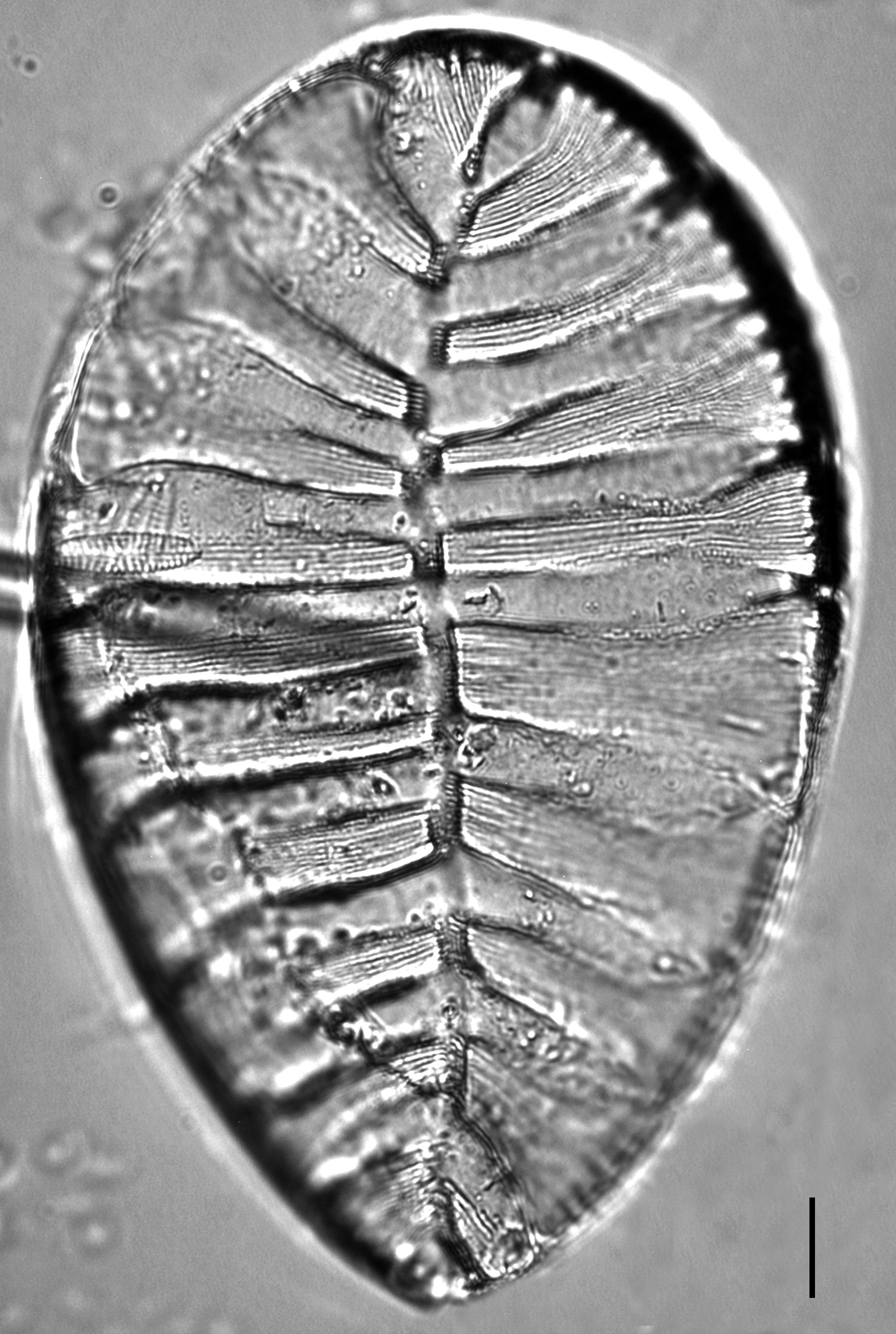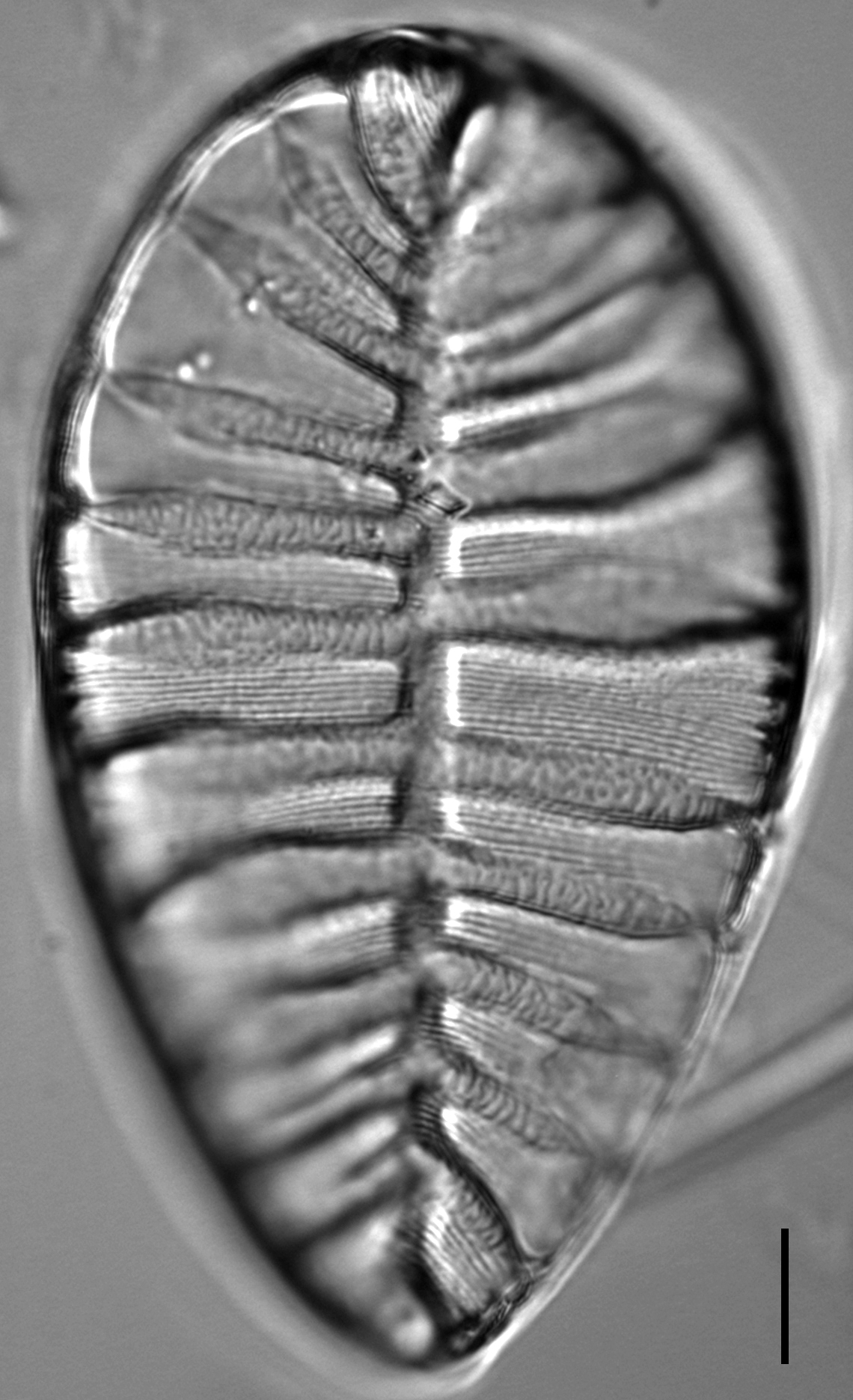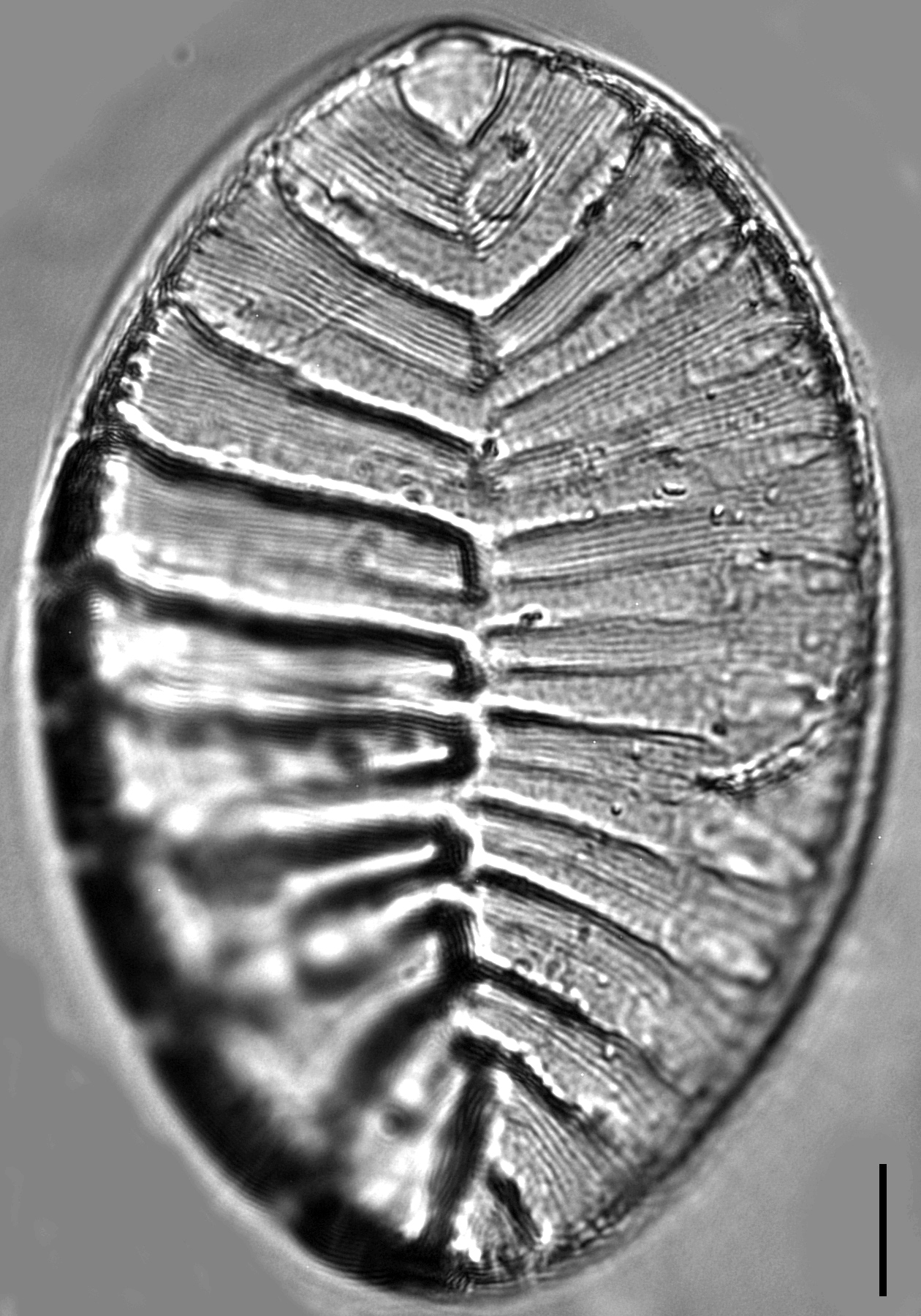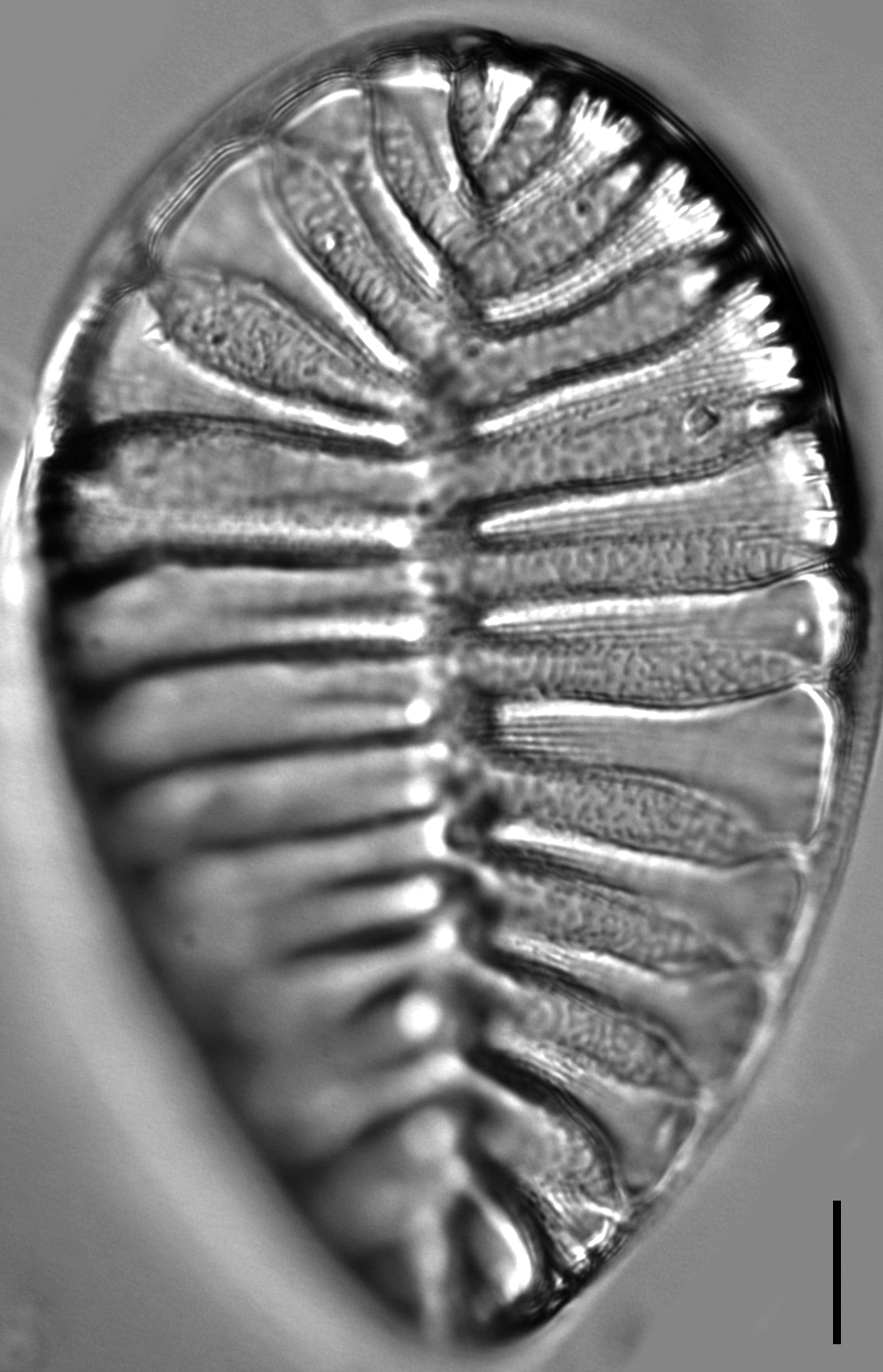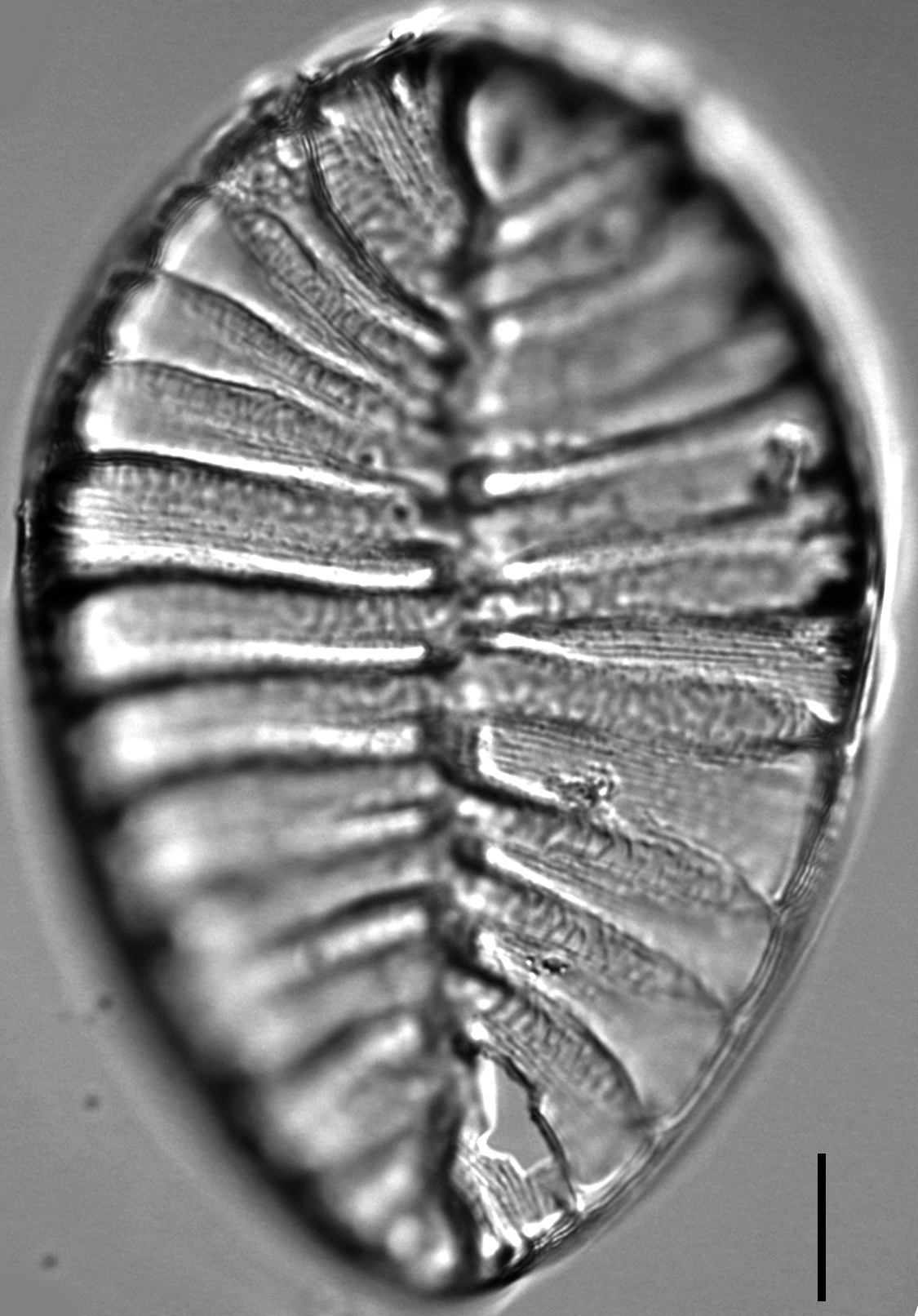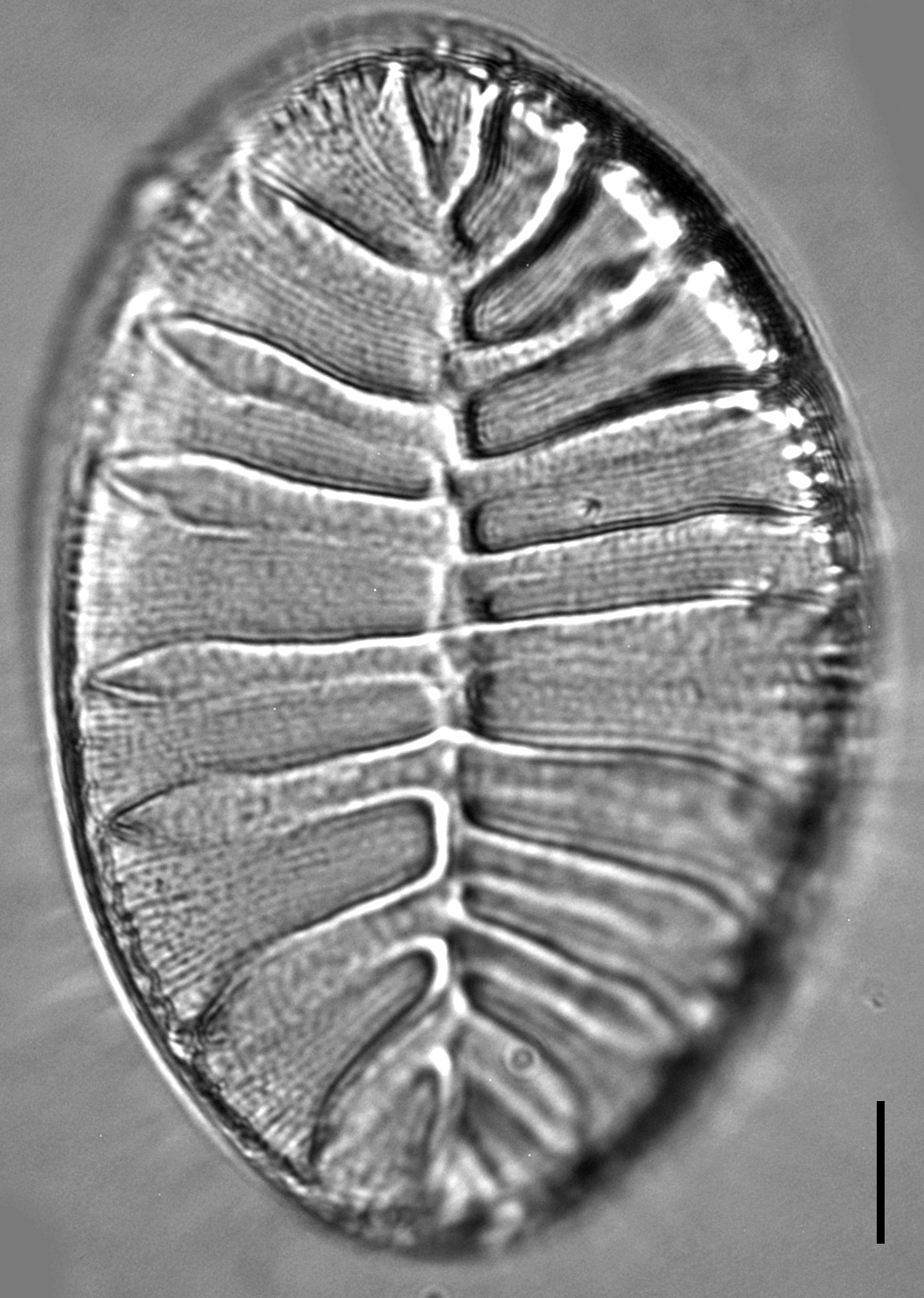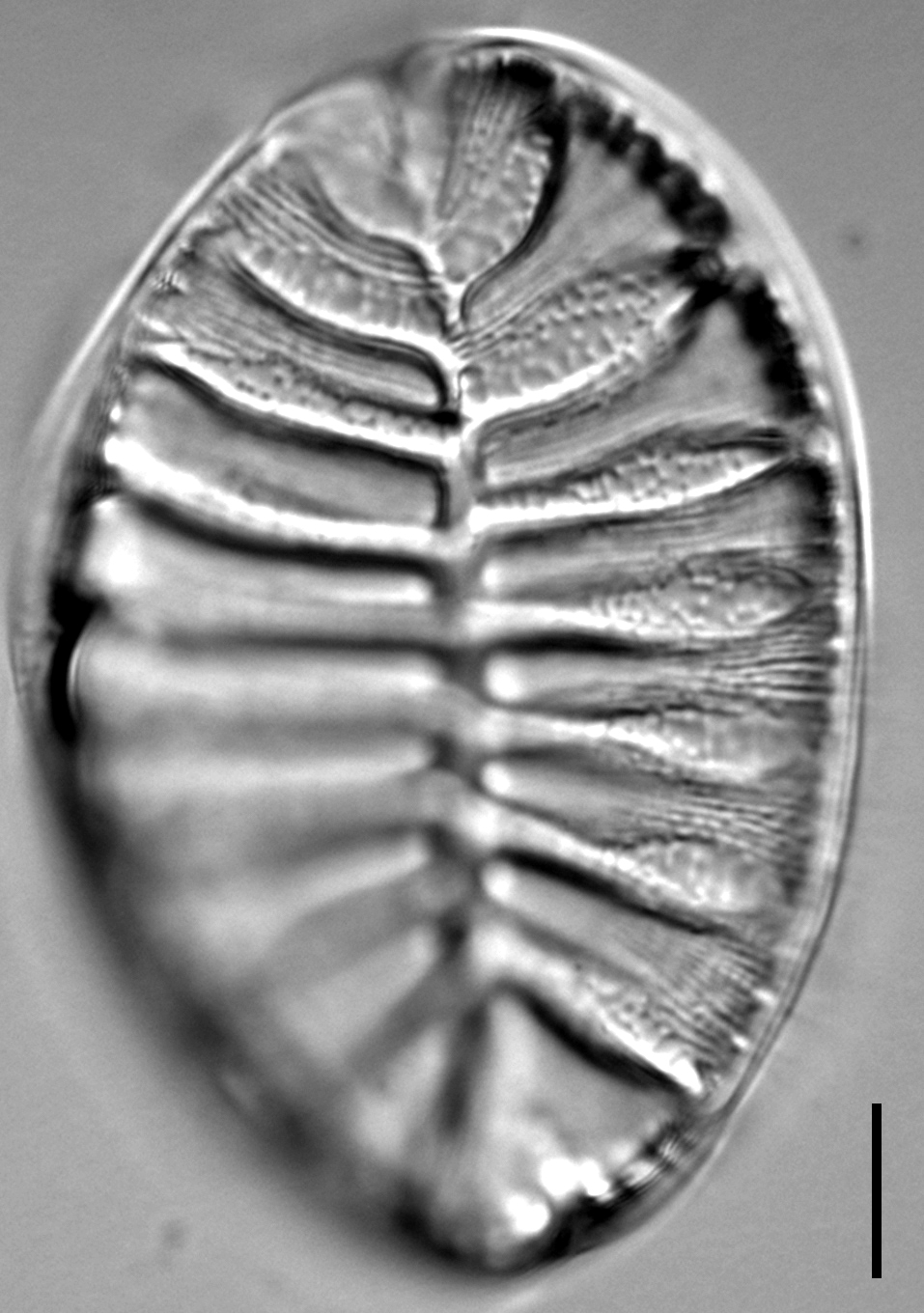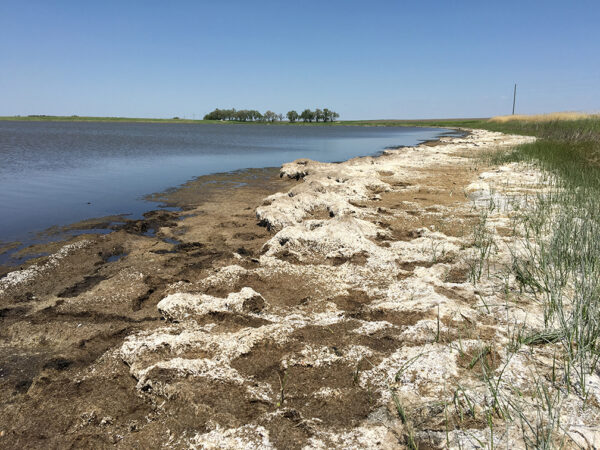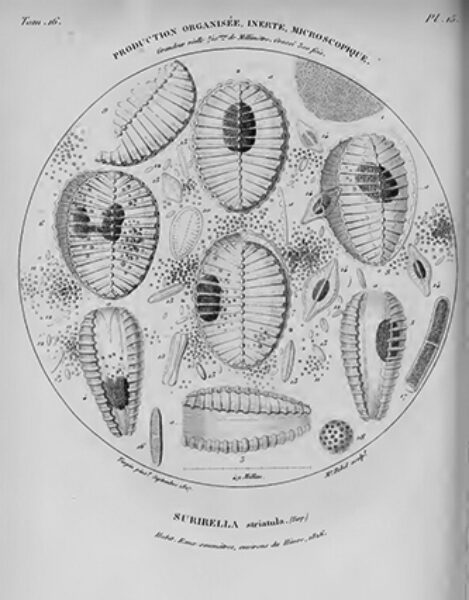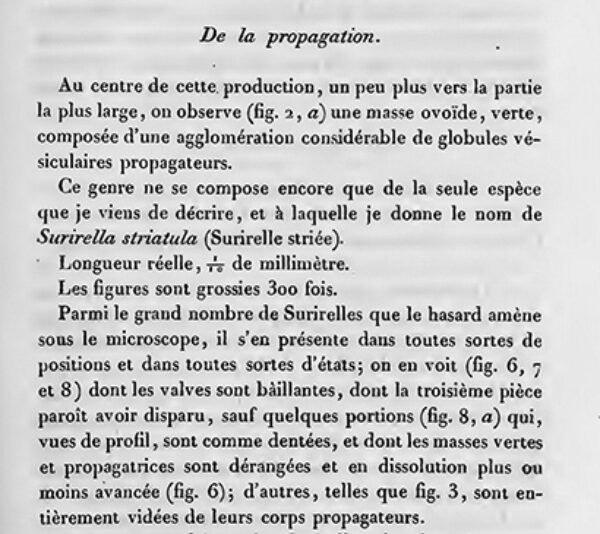Surirella striatula
-
Category
-
Length Range70.7-126.5 µm
-
Width Range46.4-80.7 µm
-
Striae in 10 µm16-22
-
SynonymsNavicula striatula (Turpin) Ehrenb. 1832
-
ContributorPeter Fedrigon - Jun 2016
-
ReviewerMark Edlund - Jun 2016
Identification
Description
Valves are elliptic to ovate, ranging from isopolar to heteropolar due to torsion along the apical axis. Apices broadly rounded. The axial area is ridge-like and appears to branch out between the valve porcae or ribs, extending to the valve margin. Length to width ratio of approximately 1.5. The valve face has large undulating porcae (ribs) that extend from the valve margin to the hyaline axial area. The ribs are not evenly spaced and are asymmetric in shape and size. Striae are located on the porcae; the area between porcae are covered in unorganized punctae. At the apex, hyaline undulations radiate from the central midline and create a triangular shaped area that is filled with striae. The raphe system is raised on a peripheral alar wing along the entire valve margin.
Autecology
Surirella striatula is typically a marine species, but was found in the epiphyton and plankton of Salt Lake, Lac qui Parle County, Minnesota, USA.
It has been observed living in river algal mats in Uvs aimag (province), Davst sum (district), Jireg Gol, Mongolia (Edlund et al. 2001). This area is saline due to large salt rock deposits. This taxon has been found in lakes in British Columbia (Cumming et al. 1995), as well as in saline inland waters in Europe (Hustedt 1930).
-
Size Range, µm3
-
Motility
-
Attachment
-
Habitat
-
Colony
-
BCG
-
Waterbody
-
Distribution
- Learn more about this
Citations & Links
Citations
Links
-
Index Nominum Algarum
-
GenBank
Cite This Page
Fedrigon, P. (2016). Surirella striatula. In Diatoms of North America. Retrieved November 21, 2024, from https://diatoms.org/species/surirella_striatula
Responses
The 15 response plots show an environmental variable (x axis) against the relative abundance (y axis) of Surirella striatula from all the stream reaches where it was present. Note that the relative abundance scale is the same on each plot. Explanation of each environmental variable and units are as follows:
ELEVATION = stream reach elevation (meters)
STRAHLER = distribution plot of the Strahler Stream Order
SLOPE = stream reach gradient (degrees)
W1_HALL = an index that is a measure of streamside (riparian) human activity that ranges from 0 - 10, with a value of 0 indicating of minimal disturbance to a value of 10 indicating severe disturbance.
PHSTVL = pH measured in a sealed syringe sample (pH units)
log_COND = log concentration of specific conductivity (µS/cm)
log_PTL = log concentration of total phosphorus (µg/L)
log_NO3 = log concentration of nitrate (µeq/L)
log_DOC = log concentration of dissolved organic carbon (mg/L)
log_SIO2 = log concentration of silicon (mg/L)
log_NA = log concentration of sodium (µeq/L)
log_HCO3 = log concentration of the bicarbonate ion (µeq/L)
EMBED = percent of the stream substrate that is embedded by sand and fine sediment
log_TURBIDITY = log of turbidity, a measure of cloudiness of water, in nephelometric turbidity units (NTU).
DISTOT = an index of total human disturbance in the watershed that ranges from 1 - 100, with a value of 0 indicating of minimal disturbance to a value of 100 indicating severe disturbance.

Surirella striatula
- Valves large, elliptic, twisted
- Porcae undulate
- Axial area ridge-like
- Triangular area at apex
Valves are large and elliptic, often twisted and slightly heteropolar. Distinct porcae, or ribs, are undulate and radiate throughout the valve. The axial area is ridge-like and branches to the valve margin. A triangular shaped area is present at one, or both, apices.
 Diatoms of North America
Diatoms of North America